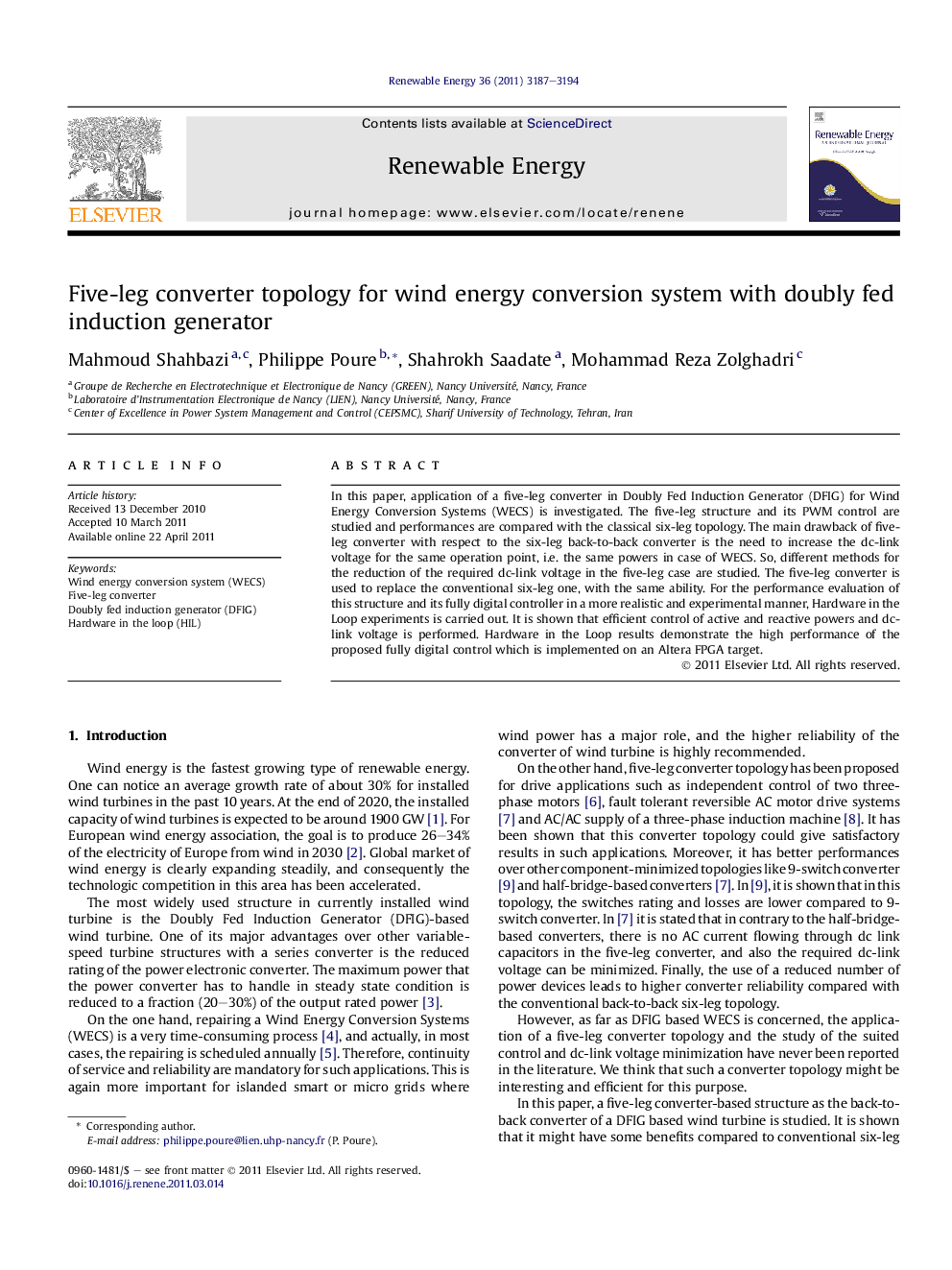| Article ID | Journal | Published Year | Pages | File Type |
|---|---|---|---|---|
| 301361 | Renewable Energy | 2011 | 8 Pages |
In this paper, application of a five-leg converter in Doubly Fed Induction Generator (DFIG) for Wind Energy Conversion Systems (WECS) is investigated. The five-leg structure and its PWM control are studied and performances are compared with the classical six-leg topology. The main drawback of five-leg converter with respect to the six-leg back-to-back converter is the need to increase the dc-link voltage for the same operation point, i.e. the same powers in case of WECS. So, different methods for the reduction of the required dc-link voltage in the five-leg case are studied. The five-leg converter is used to replace the conventional six-leg one, with the same ability. For the performance evaluation of this structure and its fully digital controller in a more realistic and experimental manner, Hardware in the Loop experiments is carried out. It is shown that efficient control of active and reactive powers and dc-link voltage is performed. Hardware in the Loop results demonstrate the high performance of the proposed fully digital control which is implemented on an Altera FPGA target.
► Application of a five-leg converter in DFIG for Wind Energy Conversion Systems. ► Different methods for the reduction of the required dc-link voltage in this case. ► HIL experiment of the studied structure and its fully digital controller.
